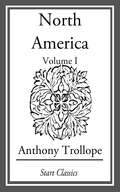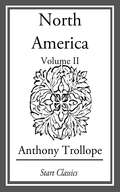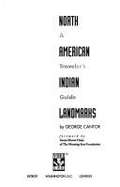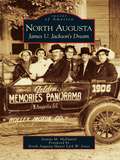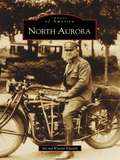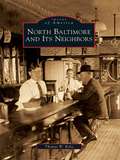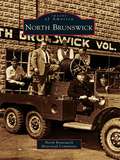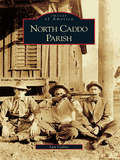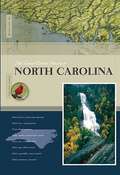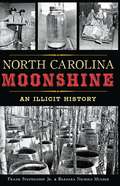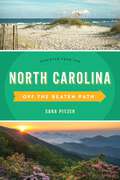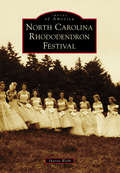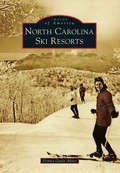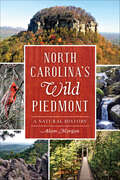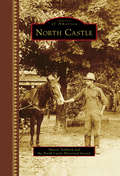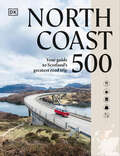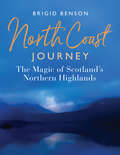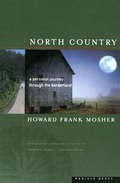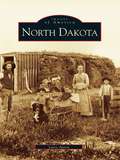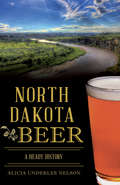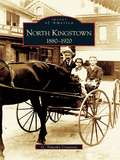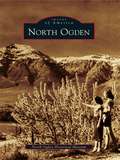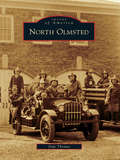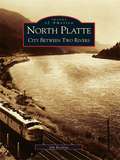- Table View
- List View
North America: Volume I
by Anthony TrollopeAnthony Trollope (1815-1882) was one of the most successful, prolific and respected English novelists of the Victorian era. He wrote penetrating novels on political, social, and gender issues and conflicts of his day. In 1867 Trollope left his position in the British Post Office to run for Parliament as a Liberal candidate in 1868. After he lost, he concentrated entirely on his literary career. While continuing to produce novels rapidly, he also edited the St Paul's Magazine, which published several of his novels in serial form. His first major success came with The Warden (1855) - the first of six novels set in the fictional county of Barsetshire. The comic masterpiece Barchester Towers (1857) has probably become the best-known of these. Trollope's popularity and critical success diminished in his later years, but he continued to write prolifically, and some of his later novels have acquired a good reputation. In particular, critics generally acknowledge the sweeping satire The Way We Live Now (1875) as his masterpiece. In all, Trollope wrote forty-seven novels, as well as dozens of short stories and a few books on travel.
North America: Volume II
by Anthony TrollopeAnthony Trollope (1815-1882) was one of the most successful, prolific and respected English novelists of the Victorian era. He wrote penetrating novels on political, social, and gender issues and conflicts of his day. In 1867 Trollope left his position in the British Post Office to run for Parliament as a Liberal candidate in 1868. After he lost, he concentrated entirely on his literary career. While continuing to produce novels rapidly, he also edited the St Paul's Magazine, which published several of his novels in serial form. His first major success came with The Warden (1855) - the first of six novels set in the fictional county of Barsetshire. The comic masterpiece Barchester Towers (1857) has probably become the best-known of these. Trollope's popularity and critical success diminished in his later years, but he continued to write prolifically, and some of his later novels have acquired a good reputation. In particular, critics generally acknowledge the sweeping satire The Way We Live Now (1875) as his masterpiece. In all, Trollope wrote forty-seven novels, as well as dozens of short stories and a few books on travel.
North American Indian Landmarks: A Traveler's Guide
by George CantorIdentifies some 300 sites, gives some history about each, and provides phone numbers and admission data (hours, cost). Arrangement is by region. Supplementary material includes a chronology, a short glossary, and a list of books for further reading. Annotation c. by Book News, Inc., Portland, Or.
North Augusta: James U. Jackson's Dream
by Jeanne M. Mcdaniel North Augusta JonesThe story of James U. Jackson and the history of North Augusta are inseparable. In the 1800s, James U. Jackson was one of the youngest railroad officials in the country. As a boy, he dreamed of developing the area on the bluffs across the Savannah River from Augusta, Georgia. That dream became a reality in 1906, when the community of North Augusta was incorporated. Not only a man of vision, Jackson's energy, drive, and personality enabled him to secure financial backing from several cities for his business ventures. His interurban railway, one of the first in the South, contributed to the development of the area's resort hotel industry, which catered to many people from the North during the winter months. Today, North Augusta's riverfront development continues, distinguishing it as a strong and independent community. James U. Jackson's dream continues to prosper.
North Aurora: 1834-1940 (Images of America)
by Jim Edwards Wynette EdwardsNorth Aurora: 1834-1940 is a quintessential study of what happened when settlers arrived in the Midwest in the 1830s. The village's location on the Fox River provided plentiful trees and waterpower for sawmills. Soon other mills, smelting works, a packing plant, a door-sash-blind factory, and a creamery all came to town. The village's railroad enabled its Boswell Cheese Factory to ship cream cheese to England in 1877. By 1922, North Aurora had a huge entertainment complex, a popular racetrack, and a hotel. Today the village is growing rapidly but still maintains its rural atmosphere.
North Baltimore and Its Neighbors
by Thomas W. BoltzLocated 25 miles south of Toledo, North Baltimore and its neighboring communities have seen dramatic changes since being settled in the 1830s. Pioneers labored to establish small farms and villages in the midst of what was then the Black Swamp, gradually achieving modest but precarious success. Then, in the 1880s, oil was discovered. The area flourished, attracting speculators, turning farmers into millionaires, and transforming quiet villages into rough-and-tumble boomtowns. It was a colorful period that also brought large homes, imposing commercial buildings, and grand town halls. However, by 1915, the oil field was depleted, and North Baltimore and its neighbors returned to their existence as quiet towns. Since then, many of the beautiful old buildings have disappeared, obscuring evidence of the area's dynamic history. With over 200 pictures, many from private collections, North Baltimore and Its Neighbors helps ensure that this history will not be forgotten.
North Brunswick
by North Brunswick Historical CommitteeNorth Brunswick, a large town spread over 12 square miles, has a rich history extending back to the early 1600s, when its only occupants were members of the Lenni-Lenape tribe. Some of the earliest establishments included the Black Horse Tavern building, which in 1670 was a stagecoach stop, and the Lion Tavern. By 1750, a gristmill operated near where a dam is currently located on Farrington Lake and was later joined by a snuff mill and tannery. From 1775 through 1900, the area was almost entirely agricultural. The first church, the Georges Road Baptist Church, was erected in 1847, and the first school committee was elected in 1829. By the dawn of the 20th century, North Brunswick began to come into its own, projecting the image of the thriving community it is today.
North Caddo Parish (Images of America)
by Sam CollierIn 1835, the United States purchased close to one million acres of land from the Caddo Confederacy of Native Americans; the Louisiana portion became known as Caddo Parish. The Indian agency's protection of that land delayed the settlement of the parishfor 25 years or more after it began in other parts of Louisiana, Texas, and Arkansas. The Red River logjam that existed for a few hundred years backed up bayous, which in return created navigable streamsand lakes. The uplands contained massive stands of virgin timbers and bountiful fruit, berries, fish, and game. The first land patents were sold in 1841, and by 1850, the area was known as Caddo Prairie. For a majority of the next 100 years, steamboat traffic, homesteaders, plantations, subsistence farmers, logging operations, entrepreneurs, and a building boom brought on by the railroad and oil industries uniquely melded to define local, cultural history. Today three towns and five villages are located in north Caddo Parish, while the memories of 10 historic communities remain strong.
North Carolina
by Teresa WimmerIntroduction to the state of North Carolina, including its early history, its land and resources, some of its famous people, and unique events.
North Carolina Moonshine: An Illicit History
by Barbara Nichols Mulder Frank Stephenson Jr.North Carolina holds a special place in the history of moonshine. For more than three centuries, the illicit home-brew was a way of life. NASCAR emerged from the illegal moonshine trade as drivers such as Junior Johnson, accustomed to running from the law, moved to the racetrack. A host of colorful characters populated the state’s bootlegging arena, like Marvin “Popcorn” Sutton, known as the Paul Bunyan of moonshine, and Alvin Sawyer, considered the moonshine king of the Great Dismal Swamp. Some law enforcement played a constant cat-and-mouse game to shut down illegal stills, while some just looked the other way. Authors Frank Stephenson and Barbara Mulder reveal the gritty history of moonshine in the Tar Heel State.
North Carolina Off the Beaten Path®: Discover Your Fun (Off the Beaten Path Series)
by Sara PitzerWhether you&’re a visitor or a local looking for something different, North Carolina Off the Beaten Path shows you the Tar Heel State with new perspectives on timeless destinations and introduces you to those you never knew existed––from the best in local dining to quirky cultural tidbits to hidden attractions, unique finds, and unusual locales. So if you&’ve &“been there, done that&” one too many times, get off the main road and venture Off the Beaten Path.
North Carolina Rhododendron Festival (Images of America)
by Sharon WebbDeep in the heart of the southern Appalachian Mountains lies Roan Mountain, the second-highest peak east of the Mississippi and home to one of the most breathtaking, naturally recurring phenomenon in the world: 600 acres of Catawba rhododendron that bloom each year in mid-June. In an effort to promote tourism and draw attention to this area, North Carolina and Tennessee joined together to form the Rhododendron Festival in 1946. As attendance increased, it soon became necessary for each state to hold a separate festival, and in 1952, the first North Carolina Rhododendron Festival took place. Since then, Bakersville, a village nestled at the base of Roan Mountain, has hosted the North Carolina Rhododendron Festival. Visitors and locals gather to pay homage to one of nature's most magnificent wonders. After nearly seven decades, the festival continues to hold the distinction of being among the oldest and most respected festivals in the Southeast, confirming its potential to endure as long as the mountain itself.
North Carolina Ski Resorts (Images of America)
by Donna Gayle AkersDuring the early 1960s, local leaders in western and northwestern North Carolina were dedicated to developing winter recreational opportunities in the mountains. North Carolina�s ski industry dates back to the winter of 1961�1962, when the Cataloochee resort in Maggie Valley developed the first ski slope in the state. Once thought impossible to make snow south of the Mason-Dixon Line, technological innovations in snowmaking allowed several other resorts to develop through the 1970s, including Appalachian Ski Mountain, Beech Mountain, Sugar Mountain, Wolf Ridge, and Ski Sapphire Valley, all of which still operate today. Images of smaller ski areas, such as Hound Ears, Seven Devils, and Mill Ridge, are featured to honor these now defunct clubs. Many of the present-day resorts have incorporated snowboarding, snowshoeing, ice-skating, and snow tubing, along with mountain biking trails for summer recreation on the slopes. North Carolina Ski Resorts showcases the rich recreational history of western and northwestern North Carolina.
North Carolina’s Wild Piedmont: A Natural History (Natural History)
by Adam MorganThe North Carolina Piedmont is rich in natural beauty and wildlife. Home to eleven state parks, three state natural areas, a national wildlife refuge and a national forest, the region offers more than just gently rolling hills. Tour the wild wine vines in Medoc Mountain State Park, marvel at the floodplains of the Haw River and follow the migratory birds in Pee Dee National Wildlife Refuge. Experience the natural history, field research, interviews with park rangers and firsthand experiences of the state's largest physiographic region. Author Adam Morgan joins in a rich tradition of nature writing to paint the majestic beauty and raw power of North Carolina's wild Piedmont.
North Castle (Images of America)
by North Castle Historical Society Sharon TombackThe town of North Castle in Westchester County is about 35 miles north of New York City and includes Armonk, Banksville and the Eastern District, and North White Plains. Home to half of the 2,145-acre Kensico Reservoir and Dam (primarily built by Italian stone masons using locally quarried stone), North Castle protects New York City's water supply, which inundates the lost Kensico Village. During the early 1920s, Route 22 became the "Gateway to the Berkshires," bringing prosperity to farm stands, restaurants, dance halls, bars, and hotels. During the late 1920s and through the 1930s, hundreds were treated to barnstorming, weekend rides, stunt flying, and parachuting at the Armonk airport. Lavish country estates at the turn of the 20th century became country clubs, housing subdivisions, and corporate parks by the beginning of the 21st century. Today, international corporations IBM and Swiss Re headquarter in town. More than 200 photographs in this book celebrate the remarkable people, places, and events that helped shape North Castle into the exceptional community it is today.
North Coast 500
by DK Travel Rachel LaidlerThe ultimate inspiration for this road trip of a lifetimeExplore the best of Scotland on the UK’s favourite road tripFairytale castles, white sand beaches, rugged mountains: there’s a reason why Scotland’s North Coast 500 is trending. Taking you along the edge of Scotland’s most dramatic coastline, this beloved route is a celebration of a spectacular corner of the country. And such a great road trip deserves a great book to match. Turn the pages of DK travel’s North Coast 500 to discover: Over 100 highlights to see along the route, from historic castles to beautiful beaches, local cafés to hidden hotspotsMaps detailing each leg of the routePractical information for your trip, including distances, durations and road conditions, as well as helpful what3words addresses to pinpoint every sightAuthor recommended places to eat, drink and stay along the wayIdeas for detours to explore even more of Scotland’s dramatic landscapes Ready to hit the road? Pop North Coast 500 in your glovebox and head for the horizon.
North Coast Journey: The Magic of Scotland's Northern Highlands
by Brigid BensonEnjoy the local color and majestic scenery of the Scottish Highlands with this essential road trip guide along the scenic North Coast 500. Known as Scotland&’s Route 66, the North Coast 500 takes travelers on a winding journey across northern Scotland&’s breathtaking coastline. Acclaimed Scottish travel writer Brigid Benson guides you on a journey that begins in the charming city of Inverness, then weaves westward to the historic village of Applecross and up the Atlantic coast to the most northerly points in Britain before heading back to Inverness along the North Sea. In addition to stunning mountains, moors, lochs and beaches, the route also features exquisite towns and villages, castles, distilleries and breweries. Benson divides the route into manageable daily itineraries, suggesting where to discover history, observe wildlife, meet great local characters, shop at quirky stores, taste outstanding food, drink in friendly bars and cafes, and stand in awe of amazing sights. She also recommends campsites, inns and other places to stay, along with places to picnic, swim, surf, walk and stargaze.&“For Scottish travel it doesn&’t get better than North Coast Journey, an eco-friendly, common sensical, well-researched foray around the locale of the North Coast 500 and beyond.&” —The Scotsman, UK
North Country: A Personal Journey Through the Borderland
by Howard Frank Mosher&“A richly observant memoir of a coast-to-coast journey along the US-Canada border . . . An armchair traveler&’s delight&” (Kirkus Reviews). &“Part travelogue, part memoir, part meditation, part exploration,&” North Country is an account of a trip along the northern border of the United States in search of the country&’s last unspoiled frontiers (The Boston Sunday Globe). In this vast, sparsely settled territory, Howard Frank Mosher found both a harsh and beautiful landscape and some of the continent&’s most independent men and women. Here, he brings this remote area to vivid life in a book &“bright with anecdote and history and lore and most importantly with affection for his human subjects&” (Richard Ford, Pulitzer Prize–winning author of Independence Day). &“A classic road book. You could, with confidence, place this book on the shelf next to such American classics as John Steinbeck&’s Travels with Charley and Jonathan Raban&’s Old Glory.&” —Detroit Free Press &“What Mosher&’s northern journey is really about is our society&’s loss of Eden, the garden we were promised when we came here. The garden we&’ve turned into pulp fiction and rocket ranges. The very fact that this brave book can stir up so many thoughts about the predicaments of civilization is surely an indication that it is well worth reading.&” —Ottawa Citizen
North Dakota
by Larry AasenDuring the early years of the 20th century, American families witnessed amazing changes in their daily lives--the arrival of plumbing and electricity in their homes, the first automobiles, and thanks to the Eastman Kodak Company, the first affordable, portable, photographic instrument, the box camera. Many families purchased the box camera (for $1) and began to document their own histories. It is upon these histories that North Dakota places its focus.Nowhere were the changes so dramatic as on the Great Plains, and in the state of North Dakota especially. Due to the huge influx of immigrants, mostly from Scandinavia, the state's population more than doubled from 1900 to 1940, roughly the period covered in North Dakota. But this was also a time ofhardship and struggle, as the Great Depression, theDustbowl, and war took their toll on North Dakotafamilies. But through hard work and perseverence, most of these families survived, and thrived, and nowshare with us the story of that time.
North Dakota Beer: A Heady History (American Palate)
by Alicia Underlee NelsonBefore North Dakota obtained statehood and entered the Union as a dry state, the region’s commercial beer industry thrived. A lengthy era of temperance forced locals to find clever ways to get a beer, such as crossing the Montana and Minnesota borders for a pint, smuggling beer over the rails and brewing at home. After Prohibition, the state’s farmers became national leaders in malting barley production, serving the biggest brewers in the world. However, local breweries struggled until 1995, when the first wave of brewpubs arrived on the scene. A craft brewing renaissance this century led to an explosion of more than a dozen craft breweries and brewpubs in less than a decade. Alicia Underlee Nelson recounts North Dakota’s journey from a dry state to a booming craft beer hub.
North End Italian Cookbook: The Bestselling Classic Featuring Even More Authentic Family Recipes
by Marguerite DiMino BuonopaneThink of Boston’s North End and you will envision a place filled with great food. Italian markets filled with strings of thick sausage, great wheels of cheese, bushels of seafood, slabs of dark chocolate, and mounds of fresh fruits and vegetables line the streets. For generations, the cooks of this Italian-American neighborhood have transformed these wonderful ingredients into memorable meals. For more than 30 years, Marguerite DiMino Buonopane, one of the North End’s most celebrated cooks, has shared her secrets to creating this culinary magic in your own kitchen. Now she gathers more than 275 of her own mouthwatering recipes peppered with savory color photos. The result is a full-color, deluxe edition of a treasured cookbook classic.
North Kingstown: 1880-1920
by G. Timothy CranstonIn the late 1880s, pharmacist Elwin "Doc" Young began to photograph the people, places, and events in his bustling crossroads community of North Kingstown. He turned the best of these images into postcards and sold them in hisapothecary shop. Today, readers can admire Young's impressive art in this volume, North Kingstown: 1880-1920. These pages highlight North Kingstown's golden era--a time when elite East Coast families on their way to Newportwould stop in quaint villages and mingle with the residents. These captivating images show the people, technology, and architecture of an important city at the beginning of the20th century.
North Ogden
by North Ogden Historical MuseumNorth Ogden is a quiet community nestled in the foothills of the Wasatch Mountains. The majestic Ben Lomond Peak silently towers over the city to the north with Lewis Peak standing guard to the east. Beautiful panoramic scenery is enjoyed in all directions. During the early 19th century, the city and surrounding areas were inhabited by the Spanish and Native Americans and explored by trappers. North Ogden City was established in 1851, and the challenges facing the pioneer families were numerous. Settlers encountered hostile Native Americans, hungry wild animals, devastating grasshopper invasions, and extreme weather conditions, and the food supplies were often depleted. Regardless, the city's population thrived, and farms, orchards, and businesses prospered. The perseverance of those early settlers is linked to the rich heritage treasured by the citizens of today.
North Olmsted (Images of America)
by Dale ThomasNorth Olmsted's history began in 1815 with David Johnson Stearns of Vermont. Stearns was followed to the area by other pioneers from New England, and they established a settlement in the wilderness of southwestern Cuyahoga County. North Olmsted went from being an isolated farming community to a village in 1908 and then to a city in 1951. The stage was then set for it to rapidly grow into a thriving suburb in the last half of the 20th century. North Olmsted's rich heritage is illustrated in this book through historic photographs from the Olmsted Historical Society that highlight the city's residents, businesses, social centers, and schools.
North Platte: City Between Two Rivers
by Jim BeckiusSituated at the junction of the North Platte and South Platte rivers, North Platte has a long history as an important stopping point in the westward migration of from the days of the California gold rush to the building of the transcontinental railroad and beyond. The Oregon Trail to the gold rush followed the South Platte River, and the Mormon Trail followed the North Platte River. In 1866 the building of the Union Pacific railroad stopped at North Platte for the winter. The railroad brought the town of North Platte to life. In 1869 the Union Pacific built a huge depot and hotel which stood until destroyed by fire in 1915. It entertained many famous visitors including William F. Cody, George Armstrong Custer, Bat Masterson, and Teddy Roosevelt. Since the 1920s North Platte has grown considerably, helped by the transcontinental Lincoln Highway which still runs through town. North Platte also had the first lighted runway in the United States, used for the air mail planes of the 1920s.
